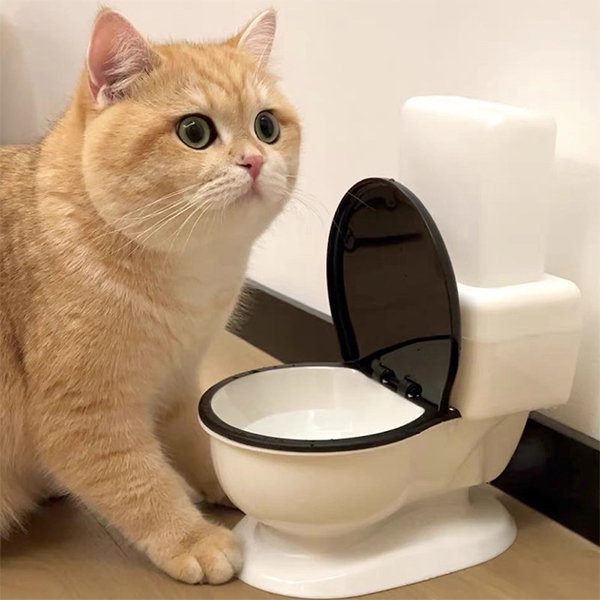Reasons You Should Avoid Flush Cat Poop Down Your Toilet - Crucial Information
Reasons You Should Avoid Flush Cat Poop Down Your Toilet - Crucial Information
Blog Article
Just about everyone has got their own conception when it comes to Can You Flush Cat Poo or Litter Down the Toilet?.

Intro
As pet cat proprietors, it's essential to bear in mind how we deal with our feline good friends' waste. While it might appear practical to flush feline poop down the bathroom, this method can have destructive repercussions for both the environment and human health.
Ecological Impact
Flushing cat poop introduces dangerous pathogens and parasites right into the water supply, posing a substantial threat to water ecosystems. These contaminants can adversely impact marine life and concession water top quality.
Health and wellness Risks
In addition to environmental worries, flushing feline waste can likewise present wellness dangers to humans. Cat feces might contain Toxoplasma gondii, a parasite that can trigger toxoplasmosis-- a possibly severe ailment, specifically for pregnant females and people with damaged immune systems.
Alternatives to Flushing
The good news is, there are safer and much more responsible methods to get rid of pet cat poop. Consider the following choices:
1. Scoop and Dispose in Trash
One of the most typical method of taking care of cat poop is to scoop it into an eco-friendly bag and toss it in the trash. Make certain to make use of a specialized trash scoop and take care of the waste quickly.
2. Usage Biodegradable Litter
Select biodegradable cat trash made from materials such as corn or wheat. These trashes are eco-friendly and can be safely dealt with in the trash.
3. Bury in the Yard
If you have a backyard, think about hiding feline waste in an assigned location away from vegetable yards and water sources. Make sure to dig deep enough to prevent contamination of groundwater.
4. Mount a Pet Waste Disposal System
Buy a pet waste disposal system specifically designed for pet cat waste. These systems utilize enzymes to break down the waste, minimizing smell and environmental influence.
Verdict
Liable animal ownership expands beyond providing food and sanctuary-- it likewise entails correct waste administration. By refraining from purging cat poop down the commode and selecting alternate disposal approaches, we can lessen our environmental impact and secure human health and wellness.
Why Can’t I Flush Cat Poop?
It Spreads a Parasite
Cats are frequently infected with a parasite called toxoplasma gondii. The parasite causes an infection called toxoplasmosis. It is usually harmless to cats. The parasite only uses cat poop as a host for its eggs. Otherwise, the cat’s immune system usually keeps the infection at low enough levels to maintain its own health. But it does not stop the develop of eggs. These eggs are tiny and surprisingly tough. They may survive for a year before they begin to grow. But that’s the problem.
Our wastewater system is not designed to deal with toxoplasmosis eggs. Instead, most eggs will flush from your toilet into sewers and wastewater management plants. After the sewage is treated for many other harmful things in it, it is typically released into local rivers, lakes, or oceans. Here, the toxoplasmosis eggs can find new hosts, including starfish, crabs, otters, and many other wildlife. For many, this is a significant risk to their health. Toxoplasmosis can also end up infecting water sources that are important for agriculture, which means our deer, pigs, and sheep can get infected too.
Is There Risk to Humans?
There can be a risk to human life from flushing cat poop down the toilet. If you do so, the parasites from your cat’s poop can end up in shellfish, game animals, or livestock. If this meat is then served raw or undercooked, the people who eat it can get sick.
In fact, according to the CDC, 40 million people in the United States are infected with toxoplasma gondii. They get it from exposure to infected seafood, or from some kind of cat poop contamination, like drinking from a stream that is contaminated or touching anything that has come into contact with cat poop. That includes just cleaning a cat litter box.
Most people who get infected with these parasites will not develop any symptoms. However, for pregnant women or for those with compromised immune systems, the parasite can cause severe health problems.
How to Handle Cat Poop
The best way to handle cat poop is actually to clean the box more often. The eggs that the parasite sheds will not become active until one to five days after the cat poops. That means that if you clean daily, you’re much less likely to come into direct contact with infectious eggs.
That said, always dispose of cat poop in the garbage and not down the toilet. Wash your hands before and after you clean the litter box, and bring the bag of poop right outside to your garbage bins.
https://trenchlesssolutionsusa.com/why-cant-i-flush-cat-poop/

We were brought to that editorial about How to Dispose of Cat Poop and Litter Without Plastic Bags through an acquaintance on a different web page. Are you aware of someone else who is fascinated by Don’t flush cat feces down the toilet? Do not hesitate to share it. Many thanks for your time. Visit again soon.
Call Today Report this page